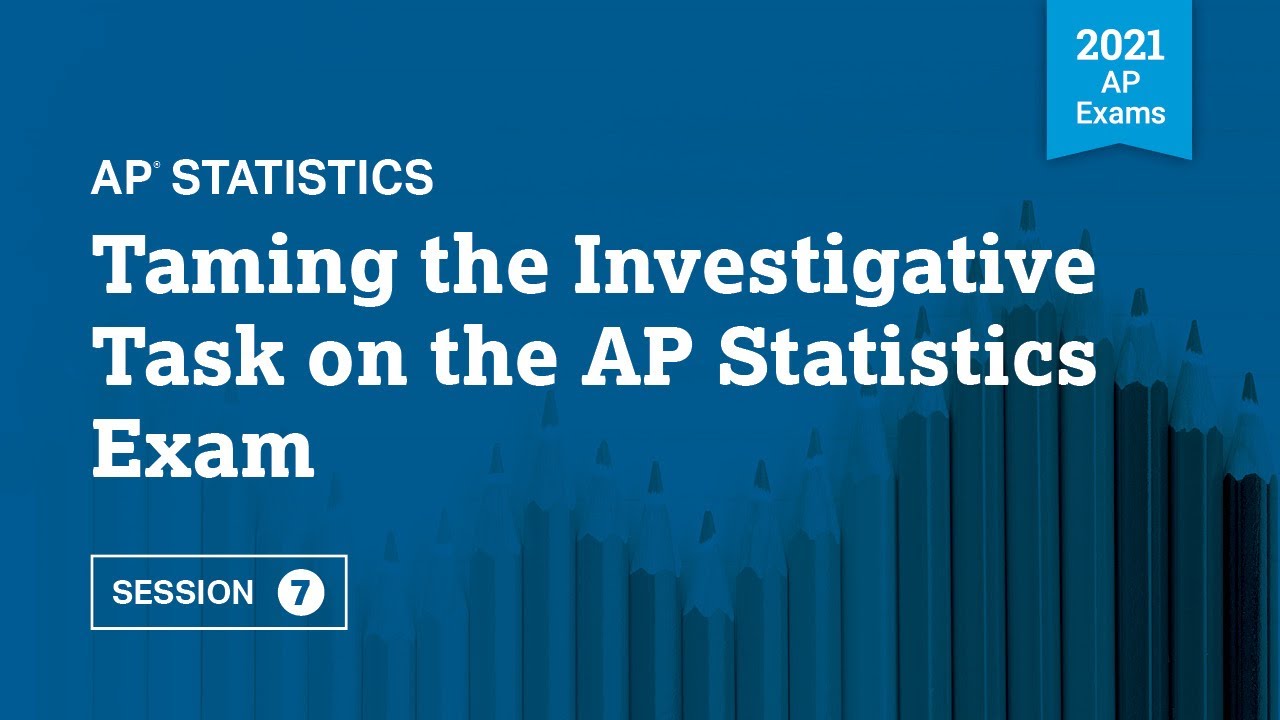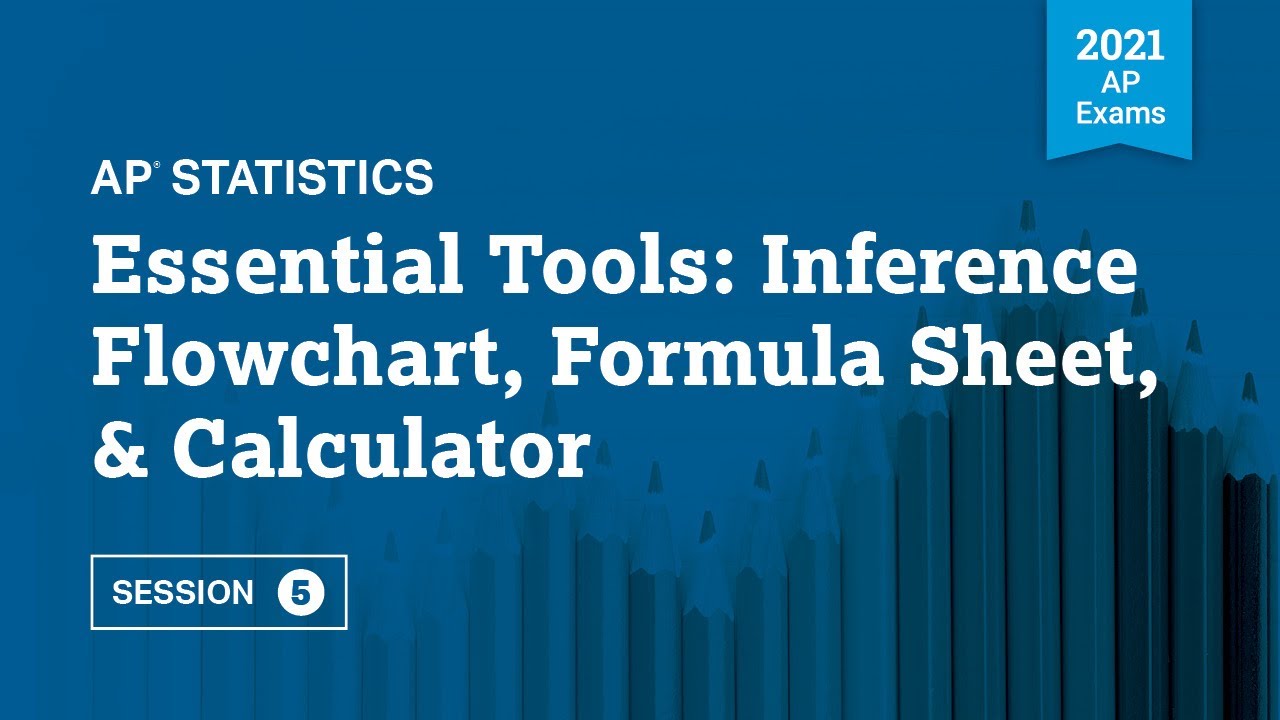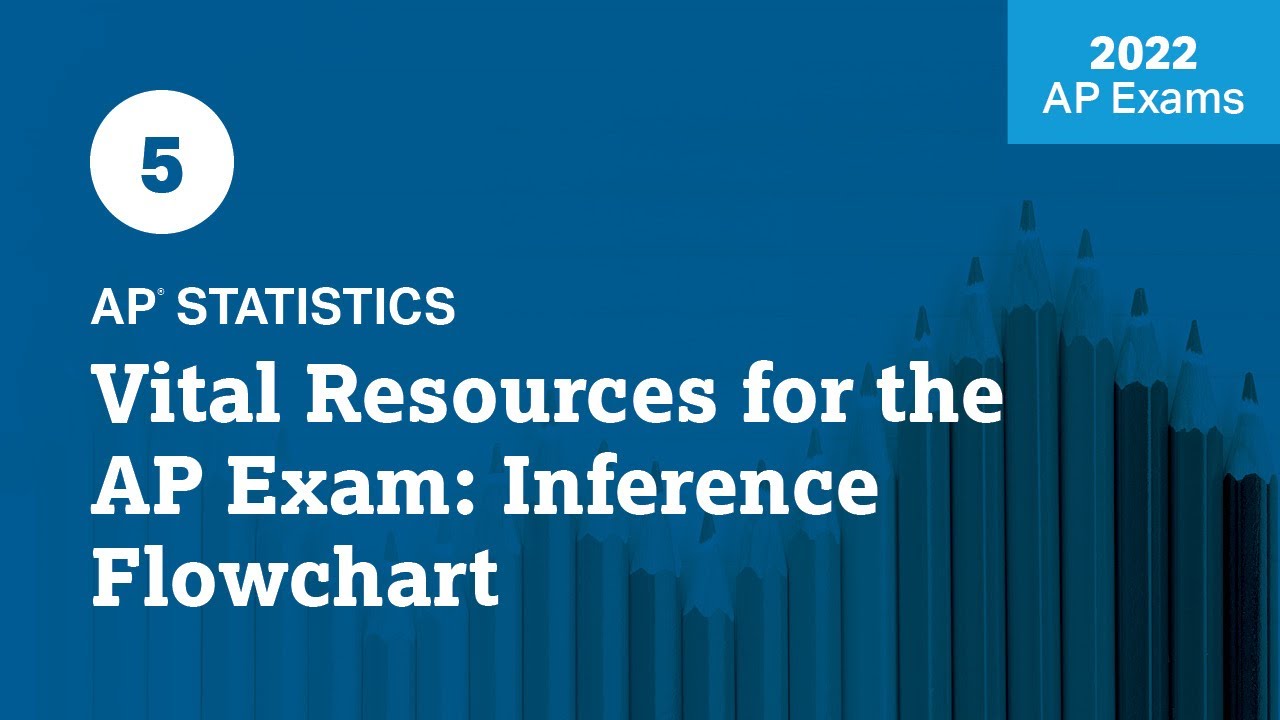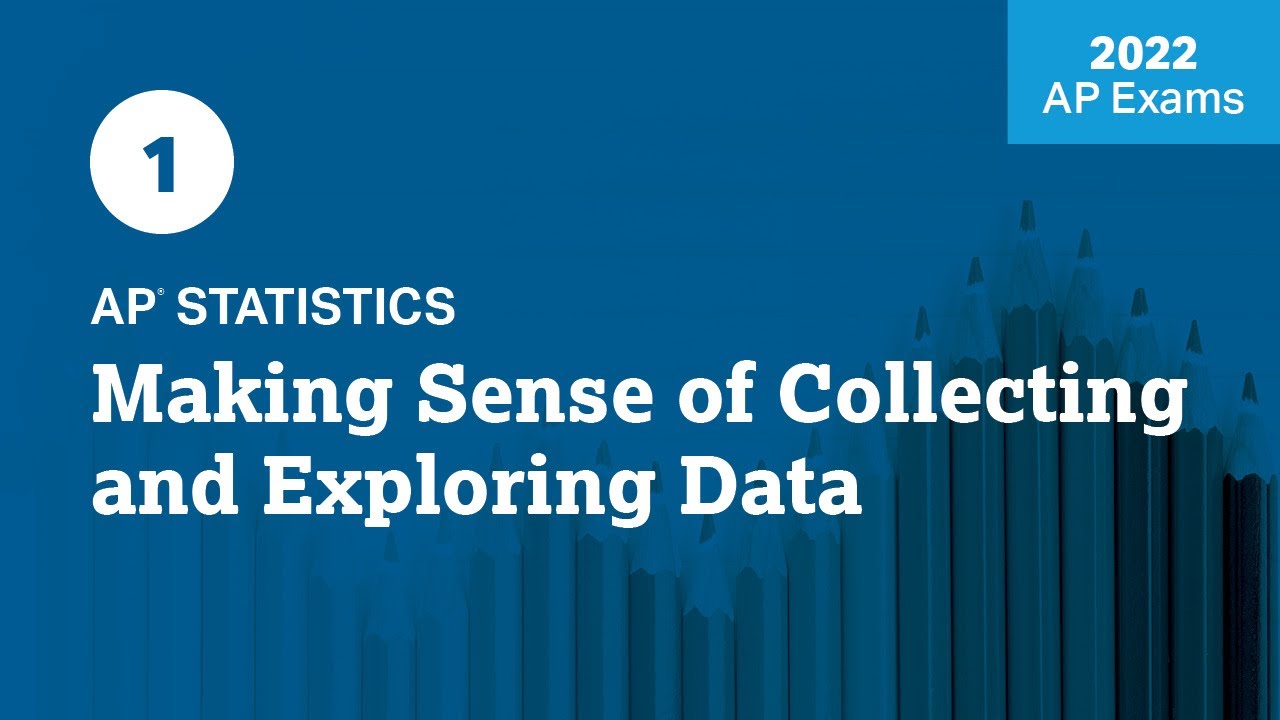2022 Live Review 2 | AP Statistics | Making Sense of Probability & Random Variables
TLDRIn this AP Statistics review session, Luke Wilcox, a teacher from East Kentwood High School, guides students through probability and random variables, key areas for the AP exam. He provides strategies for exam success, including annotating information, using the formula sheet, and eliminating incorrect answers. The session covers multiple-choice and free-response questions from past exams, emphasizing the importance of understanding binomial distributions, sampling distributions, and normal distribution calculations. Wilcox also highlights the use of tree diagrams for conditional probability, aiming to build students' confidence in tackling statistics problems.
Takeaways
- 📚 The session focuses on probability and random variables, essential topics for AP Statistics students.
- 🔍 Students are guided to identify and collect important information from questions, which is crucial for solving problems effectively.
- 📈 The importance of understanding mutually exclusive and independent events is highlighted, with strategies to determine these properties.
- 📝 The session emphasizes the use of the formula sheet provided in the AP exam, especially for binomial distributions and sampling distributions.
- 🧩 The concept of transforming random variables is discussed, explaining how operations like addition, subtraction, and multiplication affect means and standard deviations.
- 🎯 Strategies for tackling multiple-choice and free-response questions are shared, with a focus on eliminating incorrect answers and annotating texts.
- 📉 The use of z-scores and normal distribution tables (Table A) is explained to find probabilities, a common task in AP Statistics exams.
- 📑 The session provides a detailed walkthrough of how to achieve full credit on normal distribution questions, including the use of the normalcdf function on calculators.
- 🤝 The role of tree diagrams in solving probability problems involving conditional probabilities and multiple outcomes is demonstrated.
- 📚 The importance of reviewing essential content and skills related to probability is stressed, including definitions, distribution identification, and formula application.
- 🌟 The session aims to build students' confidence in tackling probability and random variable questions, which are often challenging in the AP exam.
Q & A
What is the main focus of the AP Daily Live Review session presented by Luke Wilcox?
-The main focus of the session is on probability and random variables, which are considered challenging topics for the AP Statistics exam.
What resources are available for students following the AP Daily Live Review session?
-Students have access to a Google folder containing handouts for each session, as well as the formula sheet and tables that will be provided on the actual AP Statistics exam.
What is the first multiple-choice question about in the session?
-The first multiple-choice question is about determining the relationship between two events (A and B) based on their probabilities, including whether they are mutually exclusive or independent.
How does the instructor suggest approaching the multiple-choice questions?
-The instructor suggests identifying and collecting important information from the question, reviewing the answer choices for key concepts like mutually exclusive and independence, and using elimination to discard incorrect answers.
What is the concept of a binomial distribution as discussed in the second multiple-choice question?
-A binomial distribution is a discrete probability distribution of the number of successes in a sequence of n independent yes/no experiments, each of which has two possible outcomes.
What are the four conditions necessary for a binomial distribution?
-The four conditions are: binary outcomes (success/failure), independence of trials, a fixed number of trials (n), and the same probability of success on each trial.
What is the purpose of the formula sheet during the AP Statistics exam?
-The formula sheet provides essential formulas and tables that students can reference during the exam, including those for binomial distributions, normal distributions, and sampling distributions.
How does the instructor approach the free response question about calculating an area in a normal distribution?
-The instructor guides students through identifying the required components for full credit, which include demonstrating normality and parameters, showing the boundary value and direction, and providing the correct probability.
What is the importance of using a tree diagram in probability problems involving multiple conditions?
-A tree diagram helps visualize the different paths or conditions that lead to an outcome, making it easier to calculate combined probabilities for complex scenarios.
What strategies does the instructor emphasize for success on the AP Statistics exam?
-The instructor emphasizes collecting important information, eliminating incorrect answers, familiarity with the formula sheet, drawing pictures to visualize problems, and understanding concepts like binomial distributions and sampling distributions.
How does the instructor suggest students maximize their AP exam score in the session?
-By reviewing essential content and skills, understanding specific strategies for exam success, and building confidence in tackling probability and random variable questions.
Outlines
📚 Introduction to AP Statistics Review Session
In the introductory paragraph, Luke Wilcox, an AP Statistics teacher, welcomes students to the second session of the AP Statistics review. The focus of this session is on probability and random variables, which are considered challenging topics for the AP exam. The instructor emphasizes the importance of the session for exam preparation and directs students to resources, including a handout and formula sheet, to engage with the material actively during the session.
🔍 Analyzing Probability of Awarded Jobs
The second paragraph delves into a multiple-choice question about the probability of a company being awarded two separate jobs. The instructor guides students through the process of identifying important information, reviewing answer choices, and applying concepts of mutually exclusive and independent events. The correct answer is deduced by eliminating incorrect options and confirming the events' independence through a probability calculation.
🍊 Expected Value and Standard Deviation of Orange Candies
This paragraph discusses a multiple-choice question involving the expected total number of orange candies in two samples from different brands, Dynamite Mints and Holiday Mints. The instructor explains how to identify the binomial distribution, apply the correct formulas for mean and standard deviation, and calculate the expected number of orange candies. The solution involves understanding the variance and standard deviation of the sum of two binomial distributions.
🧩 Calculating the Probability of a Mean Monthly Bonus
The fourth paragraph presents a scenario where employees can earn monthly bonuses, and the instructor guides students through calculating the probability that a sample mean of 40 employees' bonuses is less than 2. The process involves understanding the sampling distribution of the mean, applying the central limit theorem, and using the formula sheet to find the mean and standard deviation of this distribution. The z-score is calculated to determine the probability.
📉 Sampling Distribution of Teenagers' Cell Phone Ownership
In this paragraph, the focus is on determining the mean and standard deviation of the sampling distribution of a sample proportion, based on a survey about American teenagers owning cell phones. The instructor explains the difference between the true population proportion (p) and the sample proportion (p-hat), and how to use the formula sheet to find the mean and standard deviation of the sampling distribution of p-hat.
📈 Transformation of Random Variables and Their Distributions
The instructor explores the effect of mathematical transformations on random variables, specifically how scaling and shifting affect the mean and standard deviation. An example is given where a normally distributed random variable x is transformed into y by multiplying by 4 and adding 2. The new mean and standard deviation of y are calculated, highlighting the principles of distribution transformation.
🍉 Probability of Melons with Diameter Greater Than 137 from Distributor J
This paragraph involves a free-response question about the probability of selecting a melon with a diameter greater than 137 from distributor J, which provides organic melons. The instructor demonstrates how to visualize the problem with a normal distribution, calculate the z-score, and use a table to find the probability. The importance of showing normality, parameters, boundary, direction, and the correct probability for full credit is discussed.
📊 Probability Calculation Involving Two Distributors
The session continues with a more complex scenario involving two melon distributors, J and K, with different probabilities for a melon's diameter being greater than 137. The instructor introduces a tree diagram to organize the probabilities and calculate the overall probability of selecting a melon with the desired diameter from either distributor. The solution involves understanding conditional probabilities and using them to find the probability of a specific outcome.
🏆 Conclusion and Strategy Recap for AP Statistics Success
In the concluding paragraph, the instructor summarizes the key takeaways from the session, including understanding definitions, identifying distributions, transforming random variables, and calculating probabilities. Strategies for exam success are reiterated, such as collecting information, eliminating incorrect answers, using the formula sheet, and visualizing problems. The goal of building confidence in probability and random variables to maximize the AP exam score is emphasized.
Mindmap
Keywords
💡AP Statistics
💡Probability
💡Random Variables
💡Mutually Exclusive Events
💡Independence
💡Binomial Distribution
💡Sampling Distribution
💡Normal Distribution
💡Z-Score
💡Conditional Probability
💡Tree Diagram
Highlights
Introduction to AP Statistics live review session by Luke Wilcox.
Session focuses on probability and random variables, which are challenging areas on the AP exam.
Resources available for students through a provided URL, including handouts and formula sheets.
Emphasis on engaging with materials during the session to maximize learning.
Strategies for AP exam success include reviewing essential content, skills, and building confidence.
Explanation of how to calculate full credit for a free response question on normal distribution.
Discussion on the importance of understanding mutually exclusive and independent events for probability.
Use of the formula sheet during the AP exam to calculate expected values and standard deviations.
Approach to solving multiple-choice questions involving binomial distributions.
Explanation of the central limit theorem and its application to sampling distributions.
How to calculate the probability of a sample mean using z-scores and standard normal distribution.
Understanding the difference between true population proportion and sample proportion.
Guidance on transforming random variables and the effects on mean and standard deviation.
Insight into the full credit requirements for normal distribution calculations on the AP exam.
Application of the multiplication rule and conditional probability in problem-solving.
Use of tree diagrams for complex probability scenarios involving multiple conditions.
Summary of key strategies for AP Statistics exam success, including the importance of the formula sheet and visual aids.
Closing remarks encouraging students to attend the next session and continue building confidence in statistics.
Transcripts
Browse More Related Video

2021 Live Review 7 | AP Statistics | Taming the Investigative Task on the AP Statistics Exam

1 | MCQ | Practice Sessions | AP Statistics

2021 Live Review 1 | AP Statistics | How to Explore and Collect Data

2021 Live Review 5 | AP Statistics | Essential Tools Inference Flowchart, Formula Sheet & Calculator

2022 Live Review 5 | AP Statistics | Vital Resources for the AP Exam: Inference Flowchart

2022 Live Review 1 | AP Statistics | Making Sense of Collecting and Exploring Data
5.0 / 5 (0 votes)
Thanks for rating: